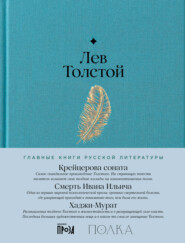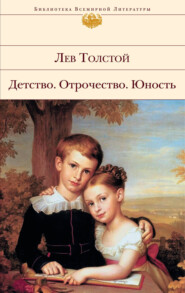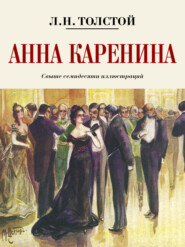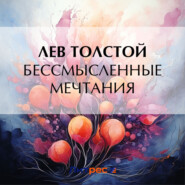По всем вопросам обращайтесь на: info@litportal.ru
(©) 2003-2025.
✖
The Kingdom of God is Within You; What is Art?
Настройки чтения
Размер шрифта
Высота строк
Поля
On the same subject the French writer Véron, in the preface to his very good work on æsthetics, says: "Il n'y a pas de science, qui ait été plus que l'esthétique livrée aux rêveries des métaphysiciens. Depuis Platon jusqu'aux doctrines officielles de nos jours, on a fait de l'art je ne sais quel amalgame de fantaisies quintessenciées, et de mystères transcendantaux qui trouvent leur expression suprême dans la conception absolue du Beau idéal, prototype immuable et divin des choses réelles" ("L'Esthétique," 1878, p. 5).[44 - There is no science which, more than æsthetics, has been handed over to the reveries of the metaphysicians. From Plato down to the received doctrines of our day, people have made of art a strange amalgam of quintessential fancies and transcendental mysteries, which find their supreme expression in the conception of an absolute ideal Beauty, immutable and divine prototype of actual things.]
If the reader will only be at the pains to peruse the following extracts, defining beauty, taken from the chief writers on æsthetics, he may convince himself that this censure is thoroughly deserved.
I shall not quote the definitions of beauty attributed to the ancients, – Socrates, Plato, Aristotle, etc., down to Plotinus, – because, in reality, the ancients had not that conception of beauty separated from goodness which forms the basis and aim of æsthetics in our time. By referring the judgments of the ancients on beauty to our conception of it, as is usually done in æsthetics, we give the words of the ancients a meaning which is not theirs.[45 - See on this matter Benard's admirable book, "L'Esthétique d'Aristote," also Walter's "Geschichte der Æsthetik in Altertum."]
CHAPTER III
I begin with the founder of æsthetics, Baumgarten (1714-1762).
According to Baumgarten,[46 - Schasler, p. 361.] the object of logical knowledge is Truth, the object of æsthetic (i. e. sensuous) knowledge is Beauty. Beauty is the Perfect (the Absolute) recognized through the senses; Truth is the Perfect perceived through reason; Goodness is the Perfect reached by moral will.
Beauty is defined by Baumgarten as a correspondence, i. e. an order of the parts in their mutual relations to each other and in their relation to the whole. The aim of beauty itself is to please and excite a desire, "Wohlgefallen und Erregung eines Verlangens." (A position precisely the opposite of Kant's definition of the nature and sign of beauty.)
With reference to the manifestations of beauty, Baumgarten considers that the highest embodiment of beauty is seen by us in nature, and he therefore thinks that the highest aim of art is to copy nature. (This position also is directly contradicted by the conclusions of the latest æstheticians.)
Passing over the unimportant followers of Baumgarten, – Maier, Eschenburg, and Eberhard, – who only slightly modified the doctrine of their teacher by dividing the pleasant from the beautiful, I will quote the definitions given by writers who came immediately after Baumgarten, and defined beauty quite in another way. These writers were Sulzer, Mendelssohn, and Moritz. They, in contradiction to Baumgarten's main position, recognize as the aim of art, not beauty, but goodness. Thus Sulzer (1720-1777) says that only that can be considered beautiful which contains goodness. According to his theory, the aim of the whole life of humanity is welfare in social life. This is attained by the education of the moral feelings, to which end art should be subservient. Beauty is that which evokes and educates this feeling.
Beauty is understood almost in the same way by Mendelssohn (1729-1786). According to him, art is the carrying forward of the beautiful, obscurely recognized by feeling, till it becomes the true and good. The aim of art is moral perfection.[47 - Schasler, p. 369.]
For the æstheticians of this school, the ideal of beauty is a beautiful soul in a beautiful body. So that these æstheticians completely wipe out Baumgarten's division of the Perfect (the Absolute), into the three forms of Truth, Goodness, and Beauty; and Beauty is again united with the Good and the True.
But this conception is not only not maintained by the later æstheticians, but the æsthetic doctrine of Winckelmann arises, again in complete opposition. This divides the mission of art from the aim of goodness in the sharpest and most positive manner, makes external beauty the aim of art, and even limits it to visible beauty.
According to the celebrated work of Winckelmann (1717-1767), the law and aim of all art is beauty only, beauty quite separated from and independent of goodness. There are three kinds of beauty: (1) beauty of form, (2) beauty of idea, expressing itself in the position of the figure (in plastic art), (3) beauty of expression, attainable only when the two first conditions are present. This beauty of expression is the highest aim of art, and is attained in antique art; modern art should therefore aim at imitating ancient art.[48 - Schasler, pp. 388-390.]
Art is similarly understood by Lessing, Herder, and afterwards by Goethe and by all the distinguished æstheticians of Germany till Kant, from whose day, again, a different conception of art commences.
Native æsthetic theories arose during this period in England, France, Italy, and Holland, and they, though not taken from the German, were equally cloudy and contradictory. And all these writers, just like the German æstheticians, founded their theories on a conception of the Beautiful, understanding beauty in the sense of a something existing absolutely, and more or less intermingled with Goodness or having one and the same root. In England, almost simultaneously with Baumgarten, even a little earlier, Shaftesbury, Hutcheson, Home, Burke, Hogarth, and others, wrote on art.
According to Shaftesbury (1670-1713), "That which is beautiful is harmonious and proportionable, what is harmonious and proportionable is true, and what is at once both beautiful and true is of consequence agreeable and good."[49 - Knight, "Philosophy of the Beautiful," i., pp. 165, 166.] Beauty, he taught, is recognized by the mind only. God is fundamental beauty; beauty and goodness proceed from the same fount.
So that, although Shaftesbury regards beauty as being something separate from goodness, they again merge into something inseparable.
According to Hutcheson (1694-1747 – "Inquiry into the Original of our Ideas of Beauty and Virtue"), the aim of art is beauty, the essence of which consists in evoking in us the perception of uniformity amid variety. In the recognition of what is art we are guided by "an internal sense." This internal sense may be in contradiction to the ethical one. So that, according to Hutcheson, beauty does not always correspond with goodness, but separates from it and is sometimes contrary to it.[50 - Schasler, p. 289. Knight, pp. 168, 169.]
According to Home, Lord Kames (1696-1782), beauty is that which is pleasant. Therefore beauty is defined by taste alone. The standard of true taste is that the maximum of richness, fullness, strength, and variety of impression should be contained in the narrowest limits. That is the ideal of a perfect work of art.
According to Burke (1729-1797 – "Philosophical Inquiry into the Origin of our Ideas of the Sublime and Beautiful"), the sublime and beautiful, which are the aim of art, have their origin in the promptings of self-preservation and of society. These feelings, examined in their source, are means for the maintenance of the race through the individual. The first (self-preservation) is attained by nourishment, defense, and war; the second (society) by intercourse and propagation. Therefore self-defense, and war, which is bound up with it, is the source of the sublime; sociability, and the sex-instinct, which is bound up with it, is the source of beauty.[51 - R. Kralik, "Weltschönheit, Versuch einer allgemeinen Æsthetik," pp. 304-306.]
Such were the chief English definitions of art and beauty in the eighteenth century.
During that period, in France, the writers on art were Père André and Batteux, with Diderot, D'Alembert, and, to some extent, Voltaire, following later.
According to Père André ("Essai sur le Beau," 1741), there are three kinds of beauty, – divine beauty, natural beauty, and artificial beauty.[52 - Knight, p. 101.]
According to Batteux (1713-1780), art consists in imitating the beauty of nature, its aim being enjoyment.[53 - Schasler, p. 316.] Such is also Diderot's definition of art.
The French writers, like the English, consider that it is taste that decides what is beautiful. And the laws of taste are not only not laid down, but it is granted that they cannot be settled. The same view was held by D'Alembert and Voltaire.[54 - Knight, pp. 102-104.]
According to the Italian æsthetician of that period, Pagano, art consists in uniting the beauties dispersed in nature. The capacity to perceive these beauties is taste, the capacity to bring them into one whole is artistic genius. Beauty commingles with goodness, so that beauty is goodness made visible, and goodness is inner beauty.[55 - R. Kralik, p. 124.]
According to the opinion of other Italians: Muratori (1672-1750), – "Riflessioni sopra il buon gusto intorno le science e le arti," – and especially Spaletti,[56 - Spaletti, Schasler, p. 328.]– "Saggio sopra la bellezza" (1765), – art amounts to an egotistical sensation, founded (as with Burke) on the desire for self-preservation and society.
Among Dutch writers, Hemsterhuis (1720-1790), who had an influence on the German æstheticians and on Goethe, is remarkable. According to him, beauty is that which gives most pleasure, and that gives most pleasure which gives us the greatest number of ideas in the shortest time. Enjoyment of the beautiful, because it gives the greatest quantity of perceptions in the shortest time, is the highest notion to which man can attain.[57 - Schasler, pp. 331-333.]
Such were the æsthetic theories outside Germany during the last century. In Germany, after Winckelmann, there again arose a completely new æsthetic theory, that of Kant (1724-1804), which, more than all others, clears up what this conception of beauty, and consequently of art, really amounts to.
The æsthetic teaching of Kant is founded as follows: Man has a knowledge of nature outside him and of himself in nature. In nature, outside himself, he seeks for truth; in himself, he seeks for goodness. The first is an affair of pure reason, the other of practical reason (free will). Besides these two means of perception, there is yet the judging capacity (Urteilskraft), which forms judgments without reasonings and produces pleasure without desire (Urtheil ohne Begriff und Vergnügen ohne Begehren). This capacity is the basis of æsthetic feeling. Beauty, according to Kant, in its subjective meaning is that which, in general and necessarily, without reasonings and without practical advantage, pleases. In its objective meaning it is the form of a suitable object, in so far as that object is perceived without any conception of its utility.[58 - Schasler, pp. 525-528.]
Beauty is defined in the same way by the followers of Kant, among whom was Schiller (1759-1805). According to Schiller, who wrote much on æsthetics, the aim of art is, as with Kant, beauty, the source of which is pleasure without practical advantage. So that art may be called a game, not in the sense of an unimportant occupation, but in the sense of a manifestation of the beauties of life itself without other aim than that of beauty.[59 - Knight, pp. 61-63.]
Besides Schiller, the most remarkable of Kant's followers in the sphere of æsthetics was Wilhelm Humboldt, who, though he added nothing to the definition of beauty, explained various forms of it, – the drama, music, the comic, etc.[60 - Schasler, pp. 740-743.]
After Kant, besides the second-rate philosophers, the writers on æsthetics were Fichte, Schelling, Hegel, and their followers. Fichte (1762-1814) says that perception of the beautiful proceeds from this: the world —i. e. nature – has two sides: it is the sum of our limitations, and it is the sum of our free idealistic activity. In the first aspect the world is limited, in the second aspect it is free. In the first aspect every object is limited, distorted, compressed, confined – and we see deformity; in the second we perceive its inner completeness, vitality, regeneration – and we see beauty. So that the deformity or beauty of an object, according to Fichte, depends on the point of view of the observer. Beauty therefore exists, not in the world, but in the beautiful soul (schöner Geist). Art is the manifestation of this beautiful soul, and its aim is the education, not only of the mind – that is the business of the savant, not only of the heart – that is the affair of the moral preacher, but of the whole man. And so the characteristic of beauty lies, not in anything external, but in the presence of a beautiful soul in the artist.[61 - Schasler, pp, 769-771.]
Following Fichte, and in the same direction, Friedrich Schlegel and Adam Müller also defined beauty. According to Schlegel (1772-1829), beauty in art is understood too incompletely, one-sidedly, and disconnectedly. Beauty exists, not only in art, but also in nature and in love; so that the truly beautiful is expressed by the union of art, nature, and love. Therefore, as inseparably one with æsthetic art, Schlegel acknowledges moral and philosophic art.[62 - Schasler, pp. 786, 787.]
According to Adam Müller (1779-1829), there are two kinds of beauty: the one, general beauty, which attracts people as the sun attracts the planet – this is found chiefly in antique art; and the other, individual beauty, which results from the observer himself becoming a sun, attracting beauty – this is the beauty of modern art. A world in which all contradictions are harmonized is the highest beauty. Every work of art is a reproduction of this universal harmony.[63 - Kralik, p. 148.] The highest art is the art of life.[64 - Kralik, p. 820.]
Next after Fichte and his followers came a contemporary of his, the philosopher Schelling (1775-1854), who has had a great influence on the æsthetic conceptions of our times. According to Schelling's philosophy, art is the production or result of that conception of things by which the subject becomes its own object, or the object its own subject. Beauty is the perception of the infinite in the finite. And the chief characteristic of works of art is unconscious infinity. Art is the uniting of the subjective with the objective, of nature with reason, of the unconscious with the conscious, and therefore art is the highest means of knowledge. Beauty is the contemplation of things in themselves as they exist in the prototype (In den Urbildern). It is not the artist who by his knowledge or skill produces the beautiful, but the idea of beauty in him itself produces it.[65 - Schasler, pp. 828, 829, 834-841.]
Of Schelling's followers the most noticeable was Solger (1780-1819 – "Vorlesungen über Æsthetik"). According to him, the idea of beauty is the fundamental idea of everything. In the world we see only distortions of the fundamental idea, but art, by imagination, may lift itself to the height of this idea. Art is therefore akin to creation.[66 - Schasler, p. 891.]
According to another follower of Schelling, Krause (1781-1832), true, positive beauty is the manifestation of the Idea in an individual form; art is the actualization of the beauty existing in the sphere of man's free spirit. The highest stage of art is the art of life, which directs its activity toward the adornment of life so that it may be a beautiful abode for a beautiful man.[67 - Schasler, p. 917.]
After Schelling and his followers came the new æsthetic doctrine of Hegel, which is held to this day, consciously by many, but by the majority unconsciously. This teaching is not only no clearer or better defined than the preceding ones, but is, if possible, even more cloudy and mystical.
According to Hegel (1770-1831), God manifests himself in nature and in art in the form of beauty. God expresses himself in two ways: in the object and in the subject, in nature and in spirit. Beauty is the shining of the Idea through matter. Only the soul, and what pertains to it, is truly beautiful; and therefore the beauty of nature is only the reflection of the natural beauty of the spirit – the beautiful has only a spiritual content. But the spiritual must appear in sensuous form. The sensuous manifestation of spirit is only appearance (schein), and this appearance is the only reality of the beautiful. Art is thus the production of this appearance of the Idea, and is a means, together with religion and philosophy, of bringing to consciousness and of expressing the deepest problems of humanity and the highest truths of the spirit.
Truth and beauty, according to Hegel, are one and the same thing; the difference being only that truth is the Idea itself as it exists in itself, and is thinkable. The Idea, manifested externally, becomes to the apprehension not only true but beautiful. The beautiful is the manifestation of the Idea.[68 - Schasler, pp. 946, 1085, 984, 985, 990.]
Following Hegel came his many adherents, Weisse, Arnold Ruge, Rosenkrantz, Theodor Vischer, and others.
According to Weisse (1801-1867), art is the introduction (Einbildung) of the absolute spiritual reality of beauty into external, dead, indifferent matter, the perception of which latter, apart from the beauty brought into it, presents the negation of all existence in itself (Negation alles Fürsichseins).
In the idea of truth, Weisse explains, lies a contradiction between the subjective and the objective sides of knowledge, in that an individual I discerns the Universal. This contradiction can be removed by a conception that should unite into one the universal and the individual, which fall asunder in our conceptions of truth. Such a conception would be reconciled (aufgehoben) truth. Beauty is such a reconciled truth.[69 - Schasler, pp. 966, 655, 956.]
According to Ruge (1802-1880), a strict follower of Hegel, beauty is the Idea expressing itself. The spirit, contemplating itself, either finds itself expressed completely, and then that full expression of itself is beauty; or incompletely, and then it feels the need to alter this imperfect expression of itself, and becomes creative art.[70 - Schasler, p. 1017.]
According to Vischer (1807-1887), beauty is the Idea in the form of a finite phenomenon. The Idea itself is not indivisible, but forms a system of ideas, which may be represented by ascending and descending lines. The higher the idea, the more beauty it contains; but even the lowest contains beauty, because it forms an essential link of the system. The highest form of the Idea is personality, and therefore the highest art is that which has for its subject-matter the highest personality.[71 - Schasler, pp. 1065, 1066.]
Such were the theories of the German æstheticians in the Hegelian direction, but they did not monopolize æsthetic dissertations. In Germany, side by side and simultaneously with the Hegelian theories, there appeared theories of beauty not only independent of Hegel's position (that beauty is the manifestation of the Idea), but directly contrary to this view, denying and ridiculing it. Such was the line taken by Herbart and, more particularly, by Schopenhauer.
According to Herbart (1776-1841), there is not, and cannot be, any such thing as beauty existing in itself. What does exist is only our opinion, and it is necessary to find the base of this opinion (Ästhetisches Elementarurtheil). Such bases are connected with our impressions. There are certain relations which we term beautiful; and art consists in finding these relations, which are simultaneous in painting, the plastic art, and architecture, successive and simultaneous in music, and purely successive in poetry. In contradiction to the former æstheticians, Herbart holds that objects are often beautiful which express nothing at all, as, for instance, the rainbow, which is beautiful for its lines and colors, and not for its mythological connection with Iris or Noah's rainbow.[72 - Schasler, pp. 1097-1100.]
Another opponent of Hegel was Schopenhauer, who denied Hegel's whole system, his æsthetics included.
According to Schopenhauer (1788-1860), Will objectivizes itself in the world on various planes; and although the higher the plane on which it is objectivized the more beautiful it is, yet each plane has its own beauty. Renunciation of one's individuality and contemplation of one of these planes of manifestation of Will gives us a perception of beauty. All men, says Schopenhauer, possess the capacity to objectivize the Idea on different planes. The genius of the artist has this capacity in a higher degree, and therefore makes a higher beauty manifest.[73 - Schasler, pp. 1124, 1107.]

















